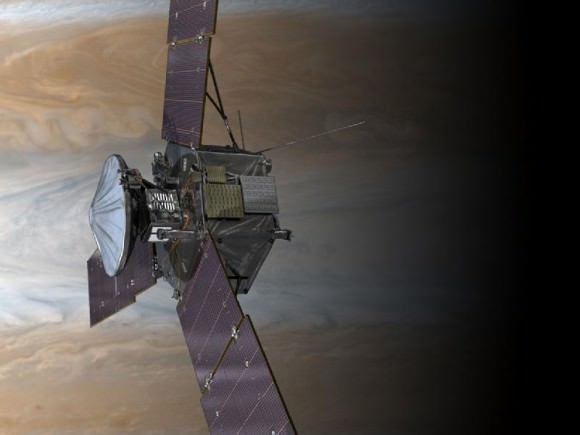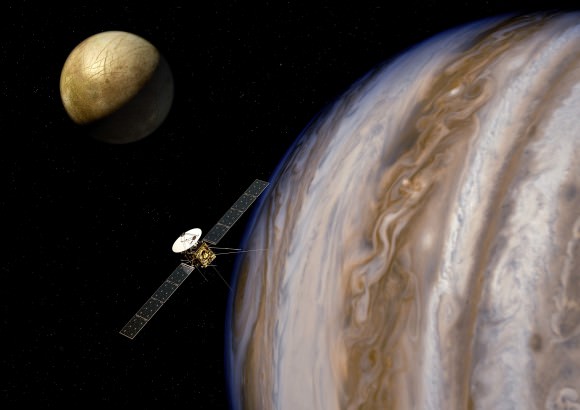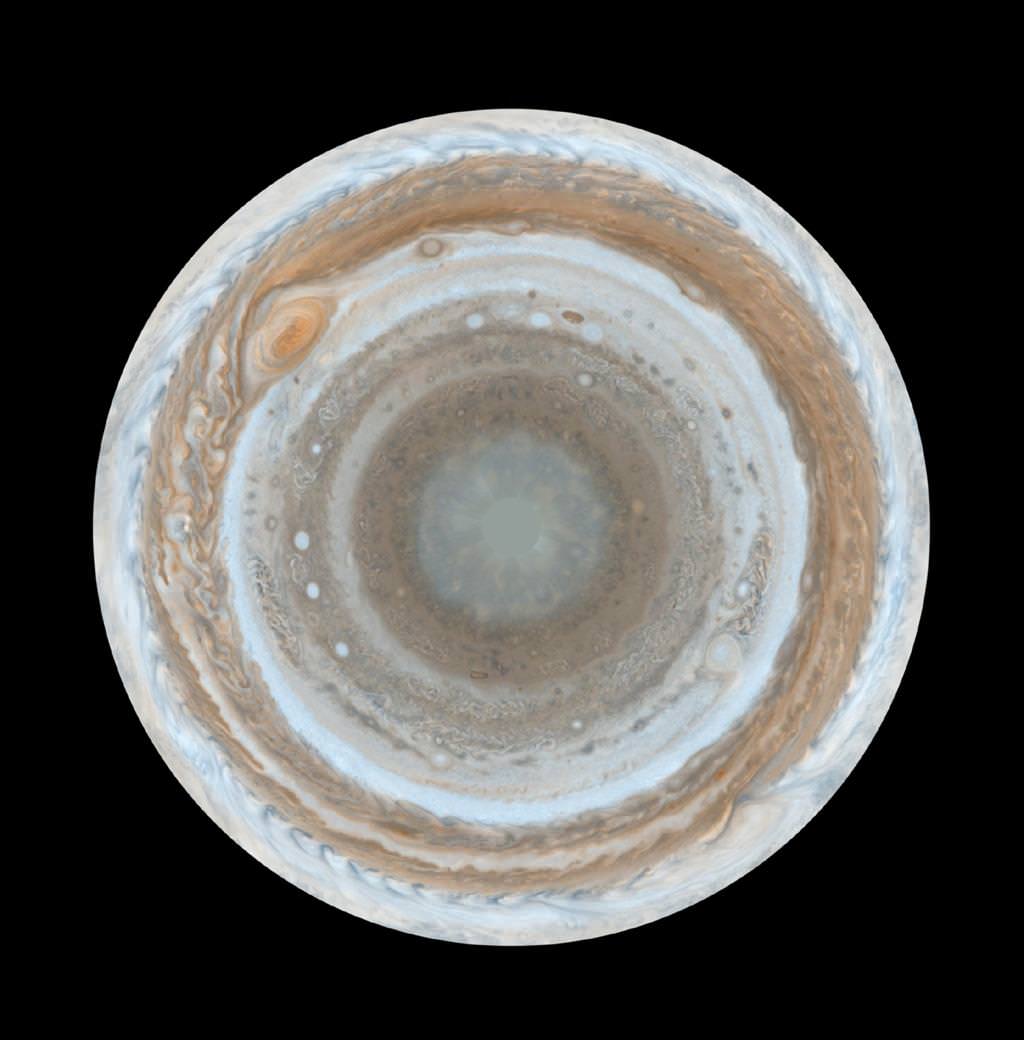Gimme a rocketship – we want to see what those bands are made of! This is a strange view of Jupiter, a familiar gas giant that humanity has sent several spacecraft to. This particular view, taken in 2000 and highlighted on the European Space Agency website recently, shows the southern hemisphere of the mighty planet.
The underneath glimpse came from the Cassini spacecraft while it was en route to Saturn. Lucky for researchers, at the time the Galileo Jupiter spacecraft was still in operation. But now that machine is long gone, leaving us to pine for a mission to Jupiter until another spacecraft gets there in 2016.
That spacecraft is called Juno and is a NASA spacecraft the agency sent aloft in August 2011. And here’s the cool thing; once it gets there, Juno is supposed to give us some insights into how the Solar System formed by looking at this particular planet.

“Underneath its dense cloud cover, Jupiter safeguards secrets to the fundamental processes and conditions that governed our Solar System during its formation. As our primary example of a giant planet, Jupiter can also provide critical knowledge for understanding the planetary systems being discovered around other stars,” NASA wrote on the spacecraft’s web page.
The spacecraft is supposed to look at the amount of water in Jupiter’s atmosphere (an ingredient of planet formation), its magnetic and gravitational fields and also its magnetic environment — including auroras.
Much further in the future (if the spacecraft development is approved all the way) will be a European mission called JUICE, for Jupiter Icy Moon Explorer.

The mission will check out the planet and three huge moons, Ganymede, Callisto and Europa, to get a better look at those surfaces. It is strongly believed that these moons could have global oceans that may be suitable for life.
Earlier this month, the European Space Agency approved the implementation phase for JUICE, which means that designers now have approval to come up with plans for the spacecraft. But it’s not going to launch until 2022 and get to Jupiter until 2030, if the schedule holds.
Meanwhile, observations of Jupiter do continue from the ground. One huge finding this year came from the Hubble Space Telescope, which confirmed observations that the Great Red Spot is shrinking for reasons that are yet unknown.


Sorry, but the top picture inspires only one sound:
EXTERMINATE!
This is a really amazing photo! I’ve seen thousnads photos of Jupiter but never this one! Absloutly amazing, I am quite speechelss.
No hexagon?